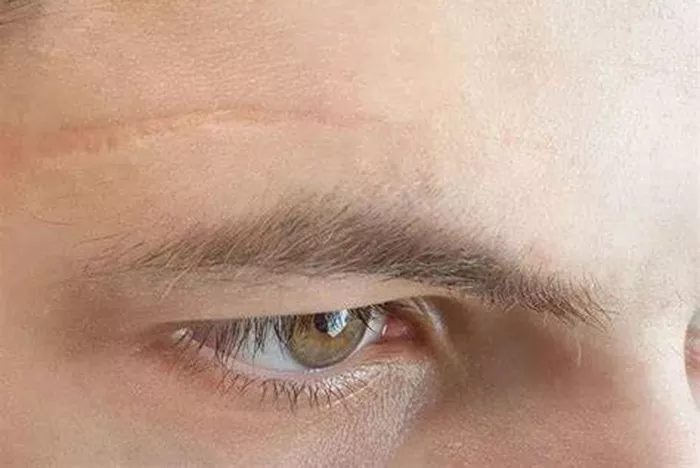Scars are a natural part of the healing process, but their appearance can sometimes be a cause of concern for many individuals. While it’s impossible to completely erase a scar, there are several methods to improve their color and make them less noticeable. This article will explore various strategies to enhance the appearance of scars, including medical treatments, over-the-counter products, and natural remedies.
Understanding Scars
What Causes Scars?
Scars form when the skin heals after an injury. This process involves the production of collagen, a protein that helps repair the damaged tissue. The amount and type of collagen produced can affect the scar’s appearance, leading to variations in color, texture, and size. Factors such as the depth of the wound, the location on the body, and an individual’s age and skin type can also influence scar formation.
Types of Scars
Hypertrophic Scars: These are raised, red scars that remain within the boundaries of the original wound.
Keloid Scars: These are raised scars that extend beyond the original wound’s boundaries and can continue to grow over time.
Atrophic Scars: These are sunken or pitted scars, often resulting from conditions like acne or chickenpox.
Contracture Scars: These are caused by burns and result in tightened skin that can affect movement.
Medical Treatments for Improving Scar Color
Laser Therapy
Laser therapy is a popular option for improving the color and texture of scars. It works by targeting the blood vessels in the scar tissue, reducing redness and promoting collagen production. Different types of lasers, such as pulsed dye lasers and fractional lasers, can be used depending on the scar type and color.
Steroid Injections
Steroid injections can help reduce the redness and size of hypertrophic and keloid scars. They work by decreasing inflammation and slowing down collagen production. Multiple sessions may be required for optimal results.
Microdermabrasion and Chemical Peels
Microdermabrasion involves using a special device to exfoliate the top layer of the skin, promoting new skin growth and reducing the appearance of scars. Chemical peels use a solution to remove the outer layer of the skin, encouraging the formation of new, more evenly pigmented skin.
Dermal Fillers
For atrophic scars, dermal fillers can be injected into the depressed areas to raise them to the level of the surrounding skin. This can improve the appearance of pitted scars and create a more even skin surface.
Surgery
In some cases, surgical intervention may be necessary to improve the appearance of scars. Techniques such as scar revision surgery, skin grafts, or flap surgery can be used to minimize the visibility of scars.
Over-the-Counter Products for Scar Improvement
Silicone Gel Sheets and Gels
Silicone gel sheets and gels are widely recommended for improving the appearance of scars. They work by hydrating the scar tissue, which can soften and flatten raised scars and reduce discoloration. Consistent use over several months is often required to see significant improvements.
Topical Treatments with Vitamin C and E
Vitamin C and E are known for their skin-healing properties. Topical treatments containing these vitamins can help lighten scars and improve skin texture. Vitamin C promotes collagen production, while Vitamin E is an antioxidant that can protect the skin from further damage.
Onion Extract Gels
Onion extract gels, such as Mederma, are popular for their scar-reducing properties. Onion extract has anti-inflammatory and antibacterial properties, which can help improve the appearance of scars over time.
Retinoid Creams
Retinoid creams, derived from Vitamin A, can help improve skin cell turnover and promote the formation of new, evenly pigmented skin. These creams are particularly effective for treating acne scars.
Hydrocortisone Creams
For scars that are red and inflamed, hydrocortisone creams can help reduce inflammation and improve the overall appearance of the scar.
Natural Remedies for Improving Scar Color
Aloe Vera
Aloe vera is a popular natural remedy for skin healing. Its anti-inflammatory and moisturizing properties can help reduce scar redness and promote skin regeneration. Apply fresh aloe vera gel directly to the scar several times a day for the best results.
Honey
Honey has been used for centuries for its healing properties. It can help keep the scar tissue moisturized and reduce redness. Apply raw honey to the scar and cover it with a bandage overnight, then rinse it off in the morning.
Lemon Juice
Lemon juice is a natural bleaching agent and can help lighten scars. However, it should be used with caution as it can make the skin more sensitive to sunlight. Apply lemon juice to the scar for 10-15 minutes, then rinse it off. Always use sunscreen afterward to protect the skin.
See Also: Is Coconut Oil Good for Scar Removal?
Coconut Oil
Coconut oil is rich in antioxidants and fatty acids that can promote healing and reduce scar discoloration. Massage a small amount of coconut oil into the scar daily to improve its appearance.
Essential Oils
Certain essential oils, such as lavender, rosehip, and frankincense, have skin-healing properties that can help improve scar color. Dilute the essential oil with a carrier oil, such as jojoba or almond oil, and apply it to the scar regularly.
Lifestyle Changes to Support Scar Healing
Proper Wound Care
Proper wound care is crucial for minimizing scar formation and discoloration. Keep the wound clean and covered, avoid picking at scabs, and use antibiotic ointments as needed to prevent infection.
Sun Protection
Exposure to the sun can worsen scar discoloration. Always protect scars from the sun by using sunscreen with at least SPF 30, wearing protective clothing, and avoiding prolonged sun exposure.
Healthy Diet
A healthy diet rich in vitamins and minerals can support skin healing from the inside out. Foods high in Vitamin C, Vitamin E, zinc, and protein can promote collagen production and improve skin health.
Hydration
Staying hydrated is essential for overall skin health. Drink plenty of water throughout the day to keep your skin hydrated and promote healing.
Avoid Smoking
Smoking can impair the body’s ability to heal and can worsen the appearance of scars. Quitting smoking can significantly improve skin health and support scar healing.
When to See a Dermatologist
If your scars are causing significant distress or are not responding to at-home treatments, it may be time to see a dermatologist. A dermatologist can provide personalized treatment options and recommend advanced therapies to improve the appearance of your scars.
Signs You Should Seek Professional Help
- The scar is painful or itchy.
- The scar is getting worse over time.
- The scar is affecting your self-esteem or quality of life.
- You have tried multiple treatments without success.
Conclusion
Improving the color of scars involves a combination of medical treatments, over-the-counter products, natural remedies, and lifestyle changes. While complete scar removal is not always possible, these strategies can significantly enhance the appearance of scars and boost your confidence. Consistency and patience are key, as it may take several months to see noticeable improvements. If in doubt, consult a dermatologist to explore the best options for your specific scar type and skin condition.
[inline_related_posts title=”You Might Be Interested In” title_align=”left” style=”list” number=”6″ align=”none” ids=”10682,10601,10530″ by=”categories” orderby=”rand” order=”DESC” hide_thumb=”no” thumb_right=”no” views=”no” date=”yes” grid_columns=”2″ post_type=”” tax=””]


































